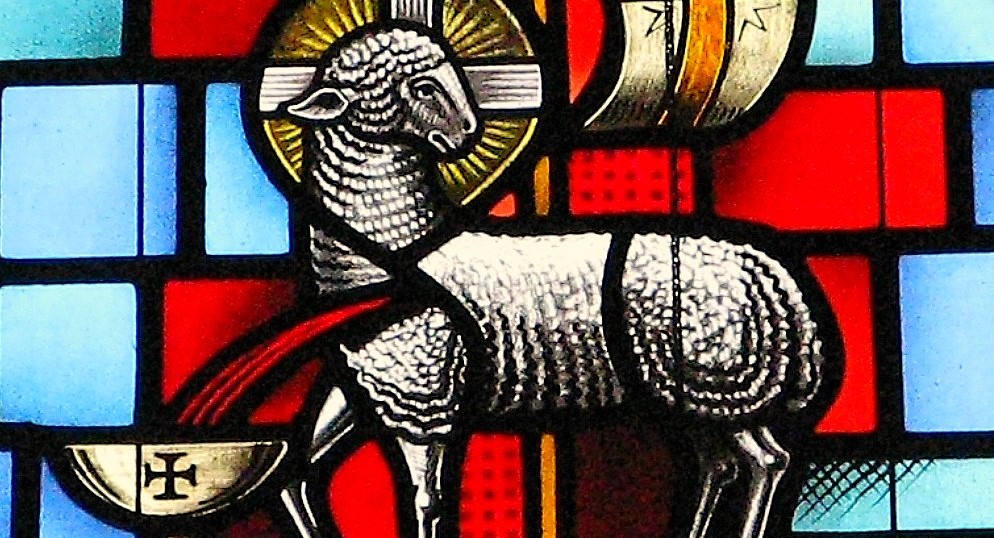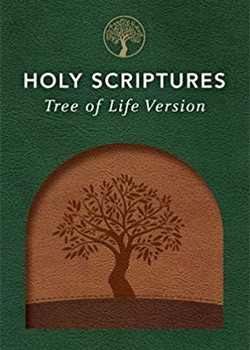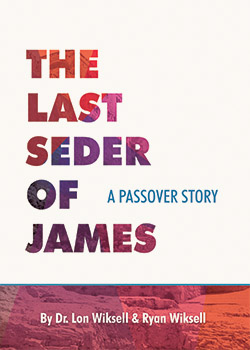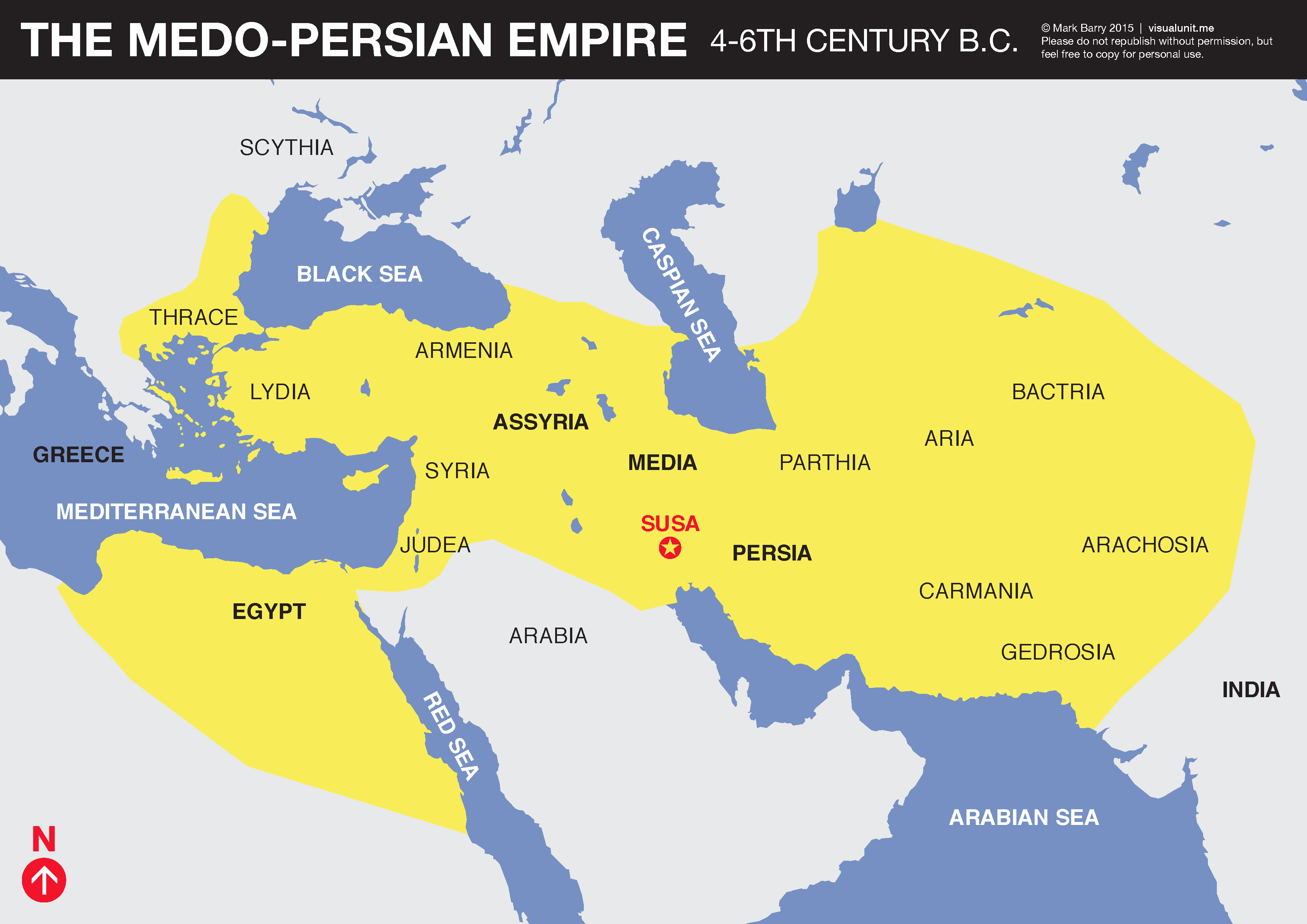The Lamb of Revelation
Passover Lamb Series, Part 3

This is Part 3 of the 3-Part Passover Lamb series. Make sure you’ve read Part 1: The Lamb of Exodus and Part 2: The Lamb of God.
The final episode of our Lamb series brings us to that puzzling letter to the early Church we call Revelation. I’m going to level with you now: this article will not finally explain what all the craziness is about. It will not get you any closer to circling a date on your calendar for the Rapture, nor will it provide any tips about how to survive the Tribulation (if there is one.)
Instead, we’ll talk a lot about Yeshua. Hopefully you’re into that sort of thing.
Enter the Sheep
And they are singing a new song, saying, “You are worthy to take the scroll and to open its seals. For You were slain, and by Your blood You redeemed for God those from every tribe and tongue and people and nation…” Then I looked, and I heard the voice of many angels around the throne and the living creatures and the elders… And I heard every creature in heaven and on the earth and under the earth… responding, “To the One seated on the throne and to the Lamb be blessing and honor and glory and power forever and ever!” And the four living creatures kept saying, “Amen!” And the elders fell down and worshiped. (Revelation 5:9-14)
At first reading, this Scripture feels powerful and moving. But then we remember that the object of worship is (wait for it) a Sheep. Not only that, it’s a mangled Sheep. What would you say to a Christian if you walked in on him bowing down to a bloody sheep? You’d be mortified. But the reality of this passage is even more challenging than that: Countless angels and apocalyptic creatures, as well as everyone in heaven and on earth and under the earth and in the sea, are united in worshiping this Sheep.
(Is it making it worse that I keep saying “sheep” instead of “lamb”? Discuss.)
The Lion, the Lamb and the White Robe
It takes some effort to get our minds around the true form of Yeshua in the book of Revelation. In the first few chapters he appears as a “Son of Man” (that is, a human) with a white robe, a golden sash, bronze feet, and a voice like Niagara Falls. So far, so good.
When this visage disappears, we are led to assume that he will appear next as a lion—the Lion of the Tribe of Judah, to be exact. But no, his next entrance is far more diminutive: a “Lamb who was slain” limping to the Throne of Heaven. But now we have another twist, because apparently this is the only creature in the universe who is worthy to open the seven seals and initiate the apocalypse. This distinction is what makes him the object of a never-ending worship service. (All this is in chapter five.)
After this scene is over, we might expect Yeshua to return to Son-of-Man form, or morph into Lion-of-Judah form. Instead, this paradox—of a defeated-yet-triumphant Lamb—sticks it out through the remainder of the book. He continues to be worshiped (or feared) in this form, in chapters six, seven, nineteen and twenty-one.
The Oxymoron
When Believers think of worship (and yes, I’m generalizing here) we tend to think of worshiping God, because of Yeshua. Or through Yeshua. But we tend not to think of worshiping Yeshua directly. After all, God told Moses very explicitly in the Torah that we were not to worship another human, or any created thing—be it animal, vegetable or mineral. So for our Messiah to come first as a human, then appear as an animal… well, it creates a challenge for us. Yes, he is God. But he looks like something far humbler.
It makes you wonder: perhaps this oxymoron is actually a God thing. After all, where else does Scripture directly mention Yeshua being worshiped? Before his crucifixion and resurrection, there’s only one time: as a helpless baby.
It’s been said that we, as humans, must worship. We can’t avoid it. Anything that constantly occupies my mind, terrifies my heart, or empowers my soul will be an object of worship to me. Consequently, most of us end up worshiping other people, or the idea of other people. And in our spare time, we worship food and drink, athletic teams, professional ambitions, art and entertainment, or even our own selves. (Especially our own selves?)
The Judo Move
We worship these things because we are impressed with their greatness, or at least their potential for it. We are not so likely to venerate a nobody, or a loser. When someone is immature he gets called a “baby”, and when he’s particularly unworthy of praise he’s being “lame”.
God the Father understands this, and he uses it to pull off the greatest judo move in history: God the Son becomes a nobody. A baby. Then he goes to the cross and becomes a loser. Ultimately he appears in victory, but in a the form of a “lame” animal.
If we are to worship Yeshua, it will not be because he looks a movie star, performs like a rock star, or makes promises like a politician. Instead, it must be about his intrinsic “worthiness”. That, after all, is the etymological root of worship: to ascribe worth.
The Upside-Down Kingdom
Why is all this so important? During his ministry on earth, Yeshua talked about nothing more than the Kingdom. His audience was desperate for a restored kingdom rooted firmly in the Land, but for some reason he kept teaching about the Kingdom of Heaven. Imagine a castle with foundations in the sky, and towers that stretch to the earth. That would quite literally be an upside-down kingdom.
In a rightside-up kingdom, we worship whatever impresses us. But in an upside-down kingdom, what is truly worthy may appear worthless. What is truly great may appear small. What is truly strong may appear lame. This will be true in the future, but it’s also true right now. After all, Yeshua has promised to visit us in our own day and time, but not as a king or a conqueror. Instead, he comes as a stranger, a prisoner or a beggar.
This upside-down Kingdom is the ultimate reality Yeshua was constantly trying to communicate to his listeners. We can experience it every day when we encounter him in the “least of these“. And we can also look forward to its final fulfillment. We should not make the mistake of so many Believers, who only believe in Kingdom Now, or Kingdom Come. As the Body of Messiah, we are called to bring them both about.
The Third Cup
When we take the Third Cup at Passover, or receive Communion or Eucharist in a church, we drink to the Kingdom Now. And when we put the cup down, we get back to the work of spreading Yeshua‘s love in real space and time.
But there is also a Fourth Cup.
Sunlight was now breaking through a crack in the ceiling, filling up the outside corridor. Daylight had come. John, sensing the urgency of the moment, poured the fourth and final cup.
“Blessed are you, Adonai our God, King of the Universe, who creates the fruit of the vine.” John filled the cup from the wineskin, watching over his shoulder for the prison guard. He closed his eyes, and with both hands, lifted the vessel to heaven in a moment of thankfulness. The Fourth Cup. The Cup of Joy. The Cup of Rejoicing.
But at that moment a heavy clatter jolted them out of their reverie, knocking the cup from John’s hand onto the floor. A pool of red spread quickly across the ground, away from the source of the disruption. It was the guard. He had thrown the gate open, and was now towering over the two worshipers.
“Your time has come. Will you walk or be dragged?”
“I will walk,” James said reverently. He bent down and retrieved the cup, brushing the dirt from its rim. “Well John, we’ll have to drink the Fourth Cup together in the Kingdom, won’t we?”
Some Believers, when celebrating Passover, choose not to drink the fourth of the Four Cups. We read Yeshua‘s words in Matthew 26:29, where he says, “I will never drink of this fruit of the vine from now on, until that day when I drink it anew with you in My Father’s kingdom.” This is the moment where his disciples were expecting to drink the Fourth Cup. The Cup of Joy. But Yeshua demurred
He had just equated the wine in the Third Cup to his own blood, which he would spill the very next day to redeem us all. By stopping there, he effectively paused the Seder for thousands of years, allowing us to live out the fullness of that Third Cup, called the Cup of Redemption. Thus, you could say we’re living in the “Age of the Third Cup”. But one day, we’ll drink…
The Fourth Cup
Much later, when the Lamb of God arrives at the Throne Room in Revelation 5, he is still bleeding, still filling up the Cup of Redemption. But it’s almost over; the Age of the Third Cup is reaching its end. The Kingdom has fully come, and the time has arrived for the community of Yeshua to drink the Fourth Cup together. This occasion is what Revelation 19 calls the Wedding Supper of the Lamb, and we are his shining bride.
Let us rejoice and be glad and give the glory to Him! For the wedding of the Lamb has come, and His bride has made herself ready. She was given fine linen to wear, bright and clean … How fortunate are those who have been invited to the wedding banquet of the Lamb! (Revelation 19:7)
As I look back through Passover Lamb series, I am struck by the power of these images. In the Exodus, a perfect lamb is sacrificed, and a nation is freed. In the Gospels, a once-and-forever Lamb is crucified, and the world is redeemed. And in Revelation, that Lamb returns to take us as his bride, and make us his own.
You and I still live in the tension of that Third Cup. We can rejoice that we are redeemed and forgiven, but there’s so much that’s still broken. So much left to do. We can’t fully enter in to the joy of “Kingdom Come.” But when we read the Master Story of God’s love for us, from beginning to end, we have a certain hope that can help us shine a light to the darkness all around us.
A lamb came long ago, the Lamb comes today, and the Lamb will come again. Worthy is the Lamb!
TOPICS: Kingdom, Lamb, Passover, Revelation, Yeshua



